|
This week we hand over our blog to author Robin Saint, who wanted to plug his book "Outlaw", but we wouldn't let him. The views expressed in this blog are those of the author and aren't necessarily those of Selfishgenie Publishing.  It is that time of year again, and no matter how hard I may try to avoid it, it’s not going to go away. So, if I have to address the subject at all, I may as well make this blog useful. If you are one of those gift givers that has a natural talent for choosing the right thing, then this blog may not be of much use to you – but for everyone else,, you may find it useful. Oh, by the way, just because the recipient said ‘Thanks, it’s just what I wanted” it doesn’t mean they meant it. They may have just been trying not to hurt your feelings. Look at the eyes – are they smiling as much as their mouth? As a male, this list tends to be focused on what men like or don’t like to receive, but I’ve added a special section at the end that hard won experience tells me what women don’t like.  The Top Ten Worst Christmas Presents
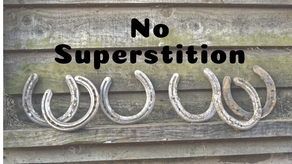 10. Anything to do with astrology, feng shui and other “ancient wisdom” or “new age” philosphies. – See also item 9. Come on people, we live in the 21st century. The reason people believed in this stuff in the past was because they knew no better. We do know better. It doesn’t work and never worked. Events will happen or they won’t happen. They can’t be predicted and they will still happen or not happen no matter how you arrange your furniture, place crystals around the room or make things smell. If you dance naked in the moonlight on Mid-Summer’s eve and then win the lottery the next day then it’s a coincidence. You would still have won the lottery if you’d stayed fully clothed and gone to bed instead. The only people whose fortunes improve through belief in this stuff are the people who make, sell or publish the garbage that perpetuates this superstitious mumbo jumbo. You may think it odd to exclude presents related to religion and superstition from a list related to a religious holiday, but I make no apologies. I celebrate Christmas as a tradition, much the same as I do Halloween, not as a religious act.  My Top One Best Christmas Present. A gift that suggests that the giver has spent some time thinking about the recipient’s personality, their hobbies and pastimes, their lifestyle and other character related traits. If they enjoy gardening, make it gardening related. If they enjoy long walks in the country, make it something that can be used on long walks, or which inspires them to find new places to go for walks. It might not be what they wanted, but it will show that you cared enough to think about it and, as we all know, it’s the thought that counts. It will also show that you read this list. What not to give a woman.  1. Sexy underwear or lingerie. I’m not being politically correct here, it’s just that men usually get it so wrong. They buy what they think is sexy, or imagine is sexy, not what the woman will feel comfortable wearing. It can make a woman feel like a sex object and that is something the modern woman is unlikely to appreciate. Even if she doesn’t object on the grounds of feminism, the man’s taste in such garments is likely to make a woman cringe. Best to stay away from that whole lingerie area – and probably night attire as well. You can't win, so don't try. 2. Perfume. Of course, many women love perfume and it is actually a good gift – if you buy the right perfume. Women are very fussy about their scents, so buying the perfume that has the most pretentious advertising campaign rarely works. If you want to buy perfume, do some research. Ask her best friend what she wears, ask her Mum, her sister, ask just about anyone who knows her. If you live with the woman in question, or have access to her bedroom (not in a creepy way) then check out the dressing table. The favourite perfume will almost certainly be in pride of place and the bottle will probably be almost empty because it is used so much. Memorise the name. Write it down. Have it tattooed on your arm if necessary. Just a tip - if it costs less than £50 ($60) then it probably isn't the right perfume. 3. Kitchen or household goods or appliances. Already mentioned above, but this is a particular no-no for husbands and boyfriends to give. A quick way to spend Christmas Day in frosty silence is to buy your beloved a new vacuum cleaner, a set of matching bath towels or, even worse, kitchen towels. 4. Never give a woman bathroom scales or anything weight loss related - unless you like eating hospital food. You may think this shouldn't need saying, but I know at least one man that made that mistake (unsurprisingly, he's now divorced).  How to get the right present for a woman Listen! Since the beginning of November, possibly earlier, the woman in your life has probably been dropping hints about what she would like for Christmas. If she’s been stopping next to jeweller’s shop windows, in the perfume departments of department stores, asking you if you like such and such a dress in a shop window, she hasn’t just been making idle conversation, she has been telling you this is what she really, really wants. If she said she’s always wanted to drive a Formula 1 racing car, then she wasn’t just fantasising, so get her an Experience Day so she can live her dream. With regard to Experience Days, do be careful. Thinking ‘she’ll love this’ is dangerous if she hasn’t said she would love it. It’s also dangerous to assume that she’ll enjoy doing something as a couple. Just because you want to jump out of an aeroplane at 10,000 feet it doesn’t mean that she does. Spa days and pamper days are popular with most women, but they aren’t a solo experience. Either you have to be prepared to go with her, or you have to give it as a day for two people so she can take her bestie. If your beloved hasn’t been quite so forthcoming, then ask her to make a list and e-mail it to you, with links to web pages where you can see the items for yourself. Make sure you pick one item from the list and you can’t go wrong. It isn’t romantic, but it works. The surprise element comes from her not knowing which item from the list you will choose. And if you want to receive a present that you will enjoy, then make sure you have a list. People will ask the special someone in your life what you would like for Christmas and if they have a list, they can answer. And if she doesn't seem that excited when you hand the present over, at least you have the excuse that it was on the list. And if you love her, make sure that your Christmas present to her tells her so.  Tips for everyone Amazon wish lists are very useful. Set one up and make sure people know where to find it. Even if your friends and relations don’t shop on Amazon, they can still check out your list to get ideas for what to buy from wherever they do shop. Personally, I think you can’t go wrong with a book both for men and for women. If you know what sort of books the recipient likes to read, then choose the latest best seller in that genre (but it is worth checking with a family member or friend to make sure they haven’t already bought it for themselves}. If they are a sports fan, then a book related to their favourite sport ticks two boxes at once. If you are thinking of giving a book, then check out the “Books” tab on this website for some great ideas - especially for lovers of sci-fi, World War II action and golf. (there's a particularly good one on there about Robin Hood but Selfishgenie won't let me tell you its title). If you have enjoyed this blog and want to make sure you don't miss the next edition (which is all about audiobooks), then why not sign up for our newsletter? We'll even send you a free ebook if you do. Just click the button below.
0 Comments
 It is disturbing to read on social media, especially Twitter, that so many authors struggle with writing a synopsis for their book. After all, they have just written between 80k and 140k of beautiful prose but are struggling to write just one page of A4 that will communicate to an agent or publisher what the book is about. Perhaps, like panic, the under confidence of some authors is spread to other authors like a virus, making perfectly confident writers suddenly doubt their ability. It is about the only explanation I can think of. But rather than try to analyse the cause perhaps, in this blog, I can help authors by offering some practical advice.  The starting point of any task is to establish a goal – something to aim for. Fortunately, agents and publishers have already done that for you, because they know what they want from a synopsis. To put it simply, they want to know what your book is about in as simple language as possible, so that they can be confident that the author knows what it is about. You may wonder about the last part of that sentence. After all, surely the author knows what their book is about, don’t they? Apparently not. The author may think they have written an exciting fantasy/sci-fi/hist fic/YA/whatever novel, but if they can’t explain that in simple terms, the agent (or publisher – I’ll stop using both terms from here) won’t believe that they know what they are doing. "Pick one genre!" 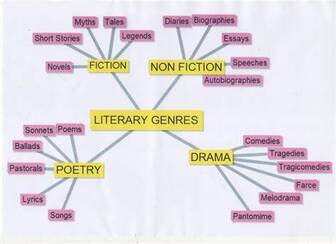 To start a synopsis, you must first clarify what genre it is written for. If you think your book crosses genre boundaries, eg a fantasy that includes a romance, then which genre is it mainly aimed at? In life I have often said that you don’t always have to pick a side, but in writing a synopsis you do have to. Pick one genre! If the romance element of the story is crucial to the fantasy plot, you can cover that later (or vice versa if romance is the main genre). And don’t start getting into sub-genres, the way Amazon categorises books – they have something like 16,000 different genre classifications. In reality there are between 35 and 50 recognised genres, depending on who you ask. Purists would argue that it is an even lower figure, but that is why they are called purists. 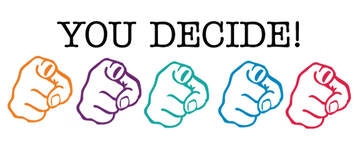 Picking your genre is vital because your agent has to know that the book has a chance of making money. Writing in an unfashionable or unpopular genre is going to dispatch your novel to the reject pile faster than a split infinitive ever would. Also, there are many agents who specialise in a specific genre and they want to know up-front that they are the right agent for your book. They won’t waste their time reading your book if it isn’t in their genre. The next step is to write a brief (75-100 word) summary of the plot. It is suggested if you can’t summarise the plot in that few words, then you don’t really know what you have written. To give you some idea of what I mean, try this summary of one of our author’s books. 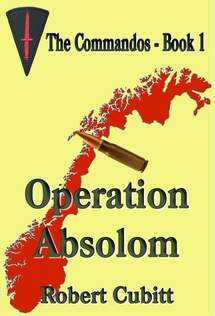 “Operation Absolom tells the story of a young man, Steven Carter, who enlists in the British Army during World War II. Bored with garrison duties he decides to volunteer for a more adventurous life with the newly formed commandos. In doing so he gets far more adventure than he bargained for and comes close to losing his life in the freezing waters off the coast of Norway. In order to survive, he has to dig deep into reserves of courage and determination that he didn’t know he possessed.” To save you counting, that is 88 words. The key thing about that summary is that it tells you when the story is set (World War II), who the protagonist* is (Steven Carter), what he gets himself involved in (fighting in the commandos) and why he gets involved (seeking adventure). It also tells you that he gets more than he bargained for, which is the source of much of the drama in the plot. The last sentence indicates a degree of personal growth taking place during the story- which means that the character develops as the story goes along.. (FYI you can find out more about Operation Absolom by clicking on the cover image) 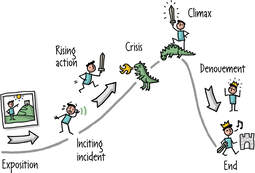 The main body of the synopsis is a longer description of 300 to 500 words. The way I go about that is to take each chapter in the book and write a single sentence saying what that chapter is about. Again, using Operation Absolom as an example, here’s what we came up with.
And so on. If there are chapters that just deal with sub-plots, delete those sentences. There is nothing wrong with having sub-plots, but the agent is more interested in the central plot, so confusing things with sub-plots and using up valuable word count along the way isn’t going to help your case. Now join the sentences up into sensible paragraphs, emphasising the major points of the story. If you are familiar with the way story arcs work, with highpoints preceded by build-up and followed by aftermath, then it is important that the description follows the same pattern, so that the agent can see where the high and low points are and therefore get some feel for the pace of the story. This is what we did with the three sample sentences we produced above: “After a conflict with his commanding officer, Steven Carter decides to volunteer for the commandos. His training in Scotland reveals an unconventional approach to soldering that risks cutting his commando career short, but he survives to join his new unit, 15 Commando. At once he is pitched into training for a top secret operation, Operation Absolom.” I’ve used only 57 words to cover almost a quarter of the book, leaving me plenty of word count still available to deal with the more action packed parts of the book. Note the hints and teasers used to tantalise the reader eg conflict, unconventional. If you are struggling to keep below the 500 word level, then you are probably including non-essential information.  As well as sub-plots, don’t include: - Dialogue, - Descriptive passages, - Inconsequential characters, - Backstory (you may hint at this with phrases such as “troubled past” or “difficult family life”), - Moralising messages - Metaphors (speak plainly). If you include any supporting characters, refer only briefly to their role in the plot and their relationship to the protagonist, eg Sam is Frodo’s best friend and would rather die than be left behind in the Shire. Later in the story he takes on greater significance in making sure that Frodo fulfils his purpose. 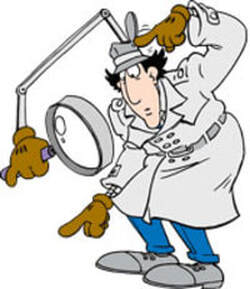 Beware the search for perfection! Beware the search for perfection! The final, short, paragraph just closes the synopsis off in a neat and tidy manner. Tell the agent what the total wordcount is and if you have any plans for a sequel. If the sequel is already underway, say that. If book is intended to be part of a series, say how many books you are planning for it (agents like to know they can expect a long term relationship with an author (with accompanying long term income)). Finally, beware of seeking perfection. You can spend a hundred hours on drafting and re-drafting 40 versions of a synopsis and it probably won’t be any better than the second or third draft. The agent doesn’t care if the synopsis isn’t perfect because, unlike the book, it isn’t something that is ever going to be published. The agent expects it to be properly spelt and grammatically sound, that is all. What they are really interested in is whether or not the story sounds interesting enough to read all the way through. How do you know if your synopsis is good enough? The same way as you know your book is good enough. Show it to someone whose opinion you value and ask “Would you read this book based on this synopsis?” As always, don’t rely on family or friends to be honest with you – they love you and tend to say what they think you want to hear. Use someone who can be relied upon to be impartial, such as your beta readers. If you haven’t got anyone to whom you can show your synopsis, send it to us. You can find our address on our “Contact” page. Make sure you tell us that you just want some feedback on it, so we know you aren’t submitting your book (though we may invite you to submit it if we like the sound of it). * Always use the word “protagonist” in a synopsis, not “main character” or “MC”. It is more professional sounding. There is only ever one protagonist. Anyone else is a “supporting character”. For the same reason the “villain” is always the “antagonist”. If you have enjoyed this blog and want to make sure you don’t miss future editions, you can sign up for our newsletter. We’ll even send you a free ebook for doing so. Just click the button below.  In one of our recent blogs we talked about using this medium as a marketing tool. In response we got a few emails from people saying they wanted to blog, but didn’t know what they should blog about. So here are a few “prompts” for you to think about. We claim no originality for this list. It has been collated from numerous sources. Some of these ideas are better than others and all will need to be adapted to suit your personal style.  1. List post List posts are great. List posts also give you high click-through rates. You can use list posts for tools, resources, to do things, checklists and so on. You see these quite a lot in search results, eg “Twenty great ways to improve your sales”. 2. How to post How-to-post is an excellent way to describe any topic in your niche together with screen shots, images, and videos. Many of our blogs are basically “how to” posts.  3. Case study post Case studies are my favourite and you must include them in your content marketing strategy. The words “Case studies” weigh more than your usual articles. A case study is simply a story – usual about success – that demonstrates the application of certain techniques. For example, you might link to a blog post and then demonstrate the techniques the originator used to make it more effective. 4. Ultimate guide post Guide post is a very detailed and comprehensive post. When you post this kind of article you need to make sure that you don’t leave any stone unturned. Make it a thorough and precise guide for higher conversions. This is really just a more in-depth “how to” blog – but it covers all known aspects of the topic.  5. Interview post Ask any influencer or blogger who ranks a little higher than you in your niche for an interview. You will be surprised how many influencers or blog owners will agree. So, if you know an author that is making a few more sales than you (you can identify that from the sales rankings of their books) you could ask them. They will post about the interview on social media when it goes out, attracting more readers to your blog. 6. Link roundup post Link roundup is one of the best ways to get connected with influencers or experts in your niche. You can do weekly or monthly roundups. You can take the expert views from their own blog content and put them with the link and description and you are ready to go, but make sure you notify them once you post it – they might share :) 7. Quote post Quotes are great. They are motivational, inspirational and people love quotes from influential people. The easiest and most effective way to create that kind of post is to put together the quotes from influencers together with a link. It works great. The quotes blog is really just a niche form of the list post. You can also turn this into a “case study” blog by showing how you applied the quote’s message. 8. Review post Review a book, product, service, location or anything else. You need to be totally honest in your reviews, so we tend to only post ones that we can honestly award 4 or 5 stars. You could post lower rated reviews, but there is always the chance that the author/seller may decide to take revenge – it has happened to us. We post a lot of book reviews because the authors Tweet the links and then we get extra traffic to our blog page. 9. Survey post Whether you want to launch a new product, new blogging site or theme – survey your audience. You can do a survey through survey blog posts. We’re not too sure about this one. The easiest way to do a survey is to use the tools that exist on several social media sites. But there' no reason why you shouldn't use a blog to conduct a survey too.  10. Infographic post Infographic is sexy and entertaining. It is also easy to consume. Infographics are a quick and funny way to learn about the topic without a ton of heavy reading. Basically, this is just a slideshow turned into a short video. 11. Trend post Trend posts are great at the beginning of the year or before any holiday season or on the latest trends in your niche. It looks forward to what may be to come. You can link it to your target audience’s special interests. 12. Holiday post Create a post before a holiday or during a holiday. This can be advice, entertainment or your holiday routine. This could be something like a Christmas story or a feature on some aspect of the holiday, such as food.  13. Behind the scenes post Show behind the scenes of how your blogging system works or your blogging life or blog analytics or behind the scenes of your product. This one is ideal for writers. There’s so much that can be said about the process of writing a book. 14. Comparison post People love comparing things and it is a great idea to post the comparison blog of two different products or someone else’s product; compare the features and benefits of your product. I’m not sure how this would work with comparing books, but it might work with comparing different marketing strategies or techniques. 15. Income reports post Show your audience the income you are making. You can show either yours or your organization’s income report. It is like a financial report. This will also help you build trust with your audience. Basically, this is just showing off and not something we intend doing, but some people might like to do that. But it can help readers to know which markets produce the best incomes for certain types of books. 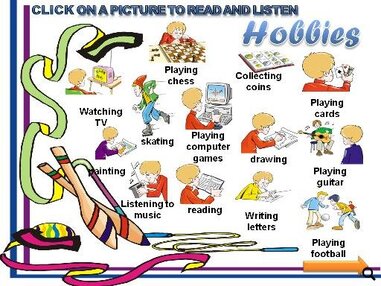 16. Special interest posts If you have done as we suggested and found out what sort of interests your readers might have, write blogs that appeal to those interests. Be careful with the content, however. If you don’t know a lot about a subject – steer well clear. Or do more research! 17. Best of posts Pull out the best post of yours and sum up together to make one single blog post and present it to your audience. Basically putting old wine in new bottles, but it’s a quick way to get a blog ready if you are short of time. 18. Product update post Update your audience on your books/products or new features. It can be your existing products or products you have been working on. It is always a good strategy to create excitement and anticipation among your audience. Really just a variation on number 16, but focusing on the product rather than the wider world of writing.  19. Challenge post Take any challenge such as losing weight, getting a certain amount of traffic, subscribers and then write about the progress, tactics or any tools you have used or are using. People love to see challenges and are eagerly waiting to see your monthly progress blog post. OR you can post a challenge for your audience. There is a lot of scope here for blogs on a variety of subjects, from writing to climbing mountains. 20. Contest post One of the evergreen ways to engage people is putting together a nice and impactful contest post. It works in all niches regardless. The downside is that if you run a contest, you probably need to offer a prize. 21. Journey post Travelling or having travelled somewhere or attended any conference or event, posting about your journey together with do's and don’ts. People like to consume ideas and suggestions. More of a travelogue than a blog, but I know plenty of people who do this. 22. Upcoming events post Post weekly/monthly/yearly city events. Post about the events with past year event pictures, short description and why you should attend these events. (Don’t forget to notify event organiser about your blog post, they might share :) You have to keep your ear close to the ground with this one, to know what is upcoming. But there are plenty of literary festivals and book fairs, and lots of people want to go them now that we are out of Covid restrictions.  23. Quiz post People love quizzes including myself. Buzzfeed is a great example of using quizzes in their content marketing strategy, they always do quizzes. You can use Quizzer to create quizzes or Playbuzz WordPress plugin if you have a WordPress website. 24. Crowdsourced post The crowdsourced blog post is another great way to get connected with influencers. Bring on multiple influencers to answer the single question. When you have 10 experts answering the same question each in 140 words, you have a 1,400 word blog post. 25. Problem/solution post You audience have a problem, give them a solution. You can give them a solution in many forms such as suggesting books, techniques, hacks, tools, events to overcome their problem etc. Very best way to start such kind of blog post is by defining a problem and then by presenting a solution. For example, in the past we have blogged about how to deal with both writer's block and imposter syndrome (separate blogs, of course - we don't want to use up a good blog idea all in one go) This is basically what we have been doing with our blogs on social media marketing. But if you are an expert in any field you can generate blogs from what you know best. 26. Share recent travel experience Share your travel experience. This work like a charm for travel bloggers. Put it together (your travel experience) and then post it as a blog post. Not really any different from number 21, but you could spread it over a number of posts by focusing on different aspects in each blog: food, culture, sights, activities etc. 27. Blog anniversary post So you are blogging for a year now, post it as a blog post. Share your blogging career experience on your blog anniversary.  28. Stats post Create a post with sexy stats, it is like a research post. You can show any type of stats such as your traffic stats, any blog or business achievements (if you have a solid one), market trend stats in your niche – it can be holiday stats, industry stats, product stats. Stats are an easy way to tell a story, but you have to be sure the stats actually support your message. 29. FAQ post Are you getting asked the same question again and again from your readers? Create a blog post on most frequently asked questions. Most authors get asked the same questions over and over, so this suggestion might fill several blogs. 30. Q/A post It is like an interview blog post but you can position it in slightly different way. Answer the unique questions from any of your readers. Usually, a video blog work very well but don’t worry about the medium yet, let you audience/readers decide what medium they want. This takes number 29 and goes into more depth with a specific question. It is also similar to number 25. 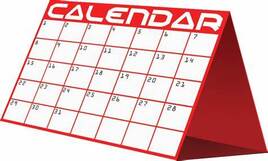 HOW OFTEN SHOULD YOU POST A BLOG The short answer is “As often as you can”. You need people (a) to come back to your website on a regular basis and (b) to Tweet about their visits or just RT the link. That means giving them a reason to come back and that means providing fresh content for them to read. We post once a week. It is hard work coming up with fresh ideas, but the above list gives you plenty of scope to get creative. If you have enjoyed this blog and want to make sure you don’t miss future editions, you can sign up for our newsletter. We’ll even send you a free ebook for doing so. Just click the button below. .  There is one P in the 6Ps of marketing that we have yet to touch on, and that is “process”. In some way all of the previous blogs touched on this as a process has to have content and they were about content. But the really important part of process is another P – planning. A marketing plan is essential to success because, if you don’t have a plan, you won’t know what you are supposed to be doing or when it should be done. So, what does the plan look like?  Rudyard Kipling Rudyard Kipling The content of your plan lies in the old Rudyard Kipling quote “I keep six honest serving men (they taught me all I knew); Their names are What and Why and When and How and Where and Who.” Putting those words into questions helps you to decide the content of your plan:
There are many similar questions that can be asked and our previous blogs tell you what to ask and how to answer some of them.  You may have noticed that we have omitted “why”. That’s because the why question is “why should I write a plan? There is an old saying about planning: If you fail to plan then you plan to fail. That’s the why. That is all good, but some people have never constructed any sort of plan at all, so this blog is aimed at them. How do you get from that quote above to selling more books?  The first thing you need when creating a plan is an objective, goal or desired outcome. Call it what you like, but it is a description of where you want to be by the time your plan has been delivered. For Indie authors this is usually quite simple to define – your goal is probably to sell more books. You even have a readymade measurement to tell you if the plan is working – the number of books that you are selling after you have delivered the plan compared to the number you are selling now. But that is a big goal to achieve and you will need to do a lot of work to achieve it. What you also need to know is if your plan is taking you in the right direction. It might take you 3 months or more to achieve your goal and that is a long time to wait to find out that your plan isn’t working and needs to be re-thought. "if each step is successful, then the final outcome should never be in doubt." So, you have to create sub-objectives, which you can tick off along the way to make sure you are staying on track for success. Believe me, if each step is successful, then the final outcome will never be in doubt. And if some of the sub-objectives still seem quite daunting, you can break them down even further. Remember the old maxim: “How do you eat an elephant? One bit at a time.” (apologies to vegans).  Not this sort of trial. Not this sort of trial. For each major objective you need to ask those who, what, where etc questions to identify the sub objectives and if you want to break the sub-objective down into smaller bits, you may need to ask them again. But whatever you plan to do, keep it simple. Simple plans have fewer things that can go wrong and the less that can go wrong, the more chance there is of success. You can always go back to the plan later, after you have learnt from trying things out, and get a bit more ambitious in your use of marketing techniques (I talk about reviewing plans later). You may even want to run a few “pilot schemes” or “trials” to see if what you plan to do is actually going to work on a larger scale when you set the whole plan in motion.  One of the things of which you have to be careful, is that you lay out your sub-objectives in the right order. For example, if you were building a house, “Put the roof on” wouldn’t appear in the plan until after “dig foundations” and “build walls”. You may need to spend a bit of time making sure your marketing plan is constructed (groan at bad pun) in the right order, just like you would build a house. Test the logic and feasibility of doing things in the order you have described, to see if you have got it right. In previous blogs we talked about getting some training in social media marketing, so that might be an early sub-objective in your plan. We also talked about writing your marketing messages, so trying those out on people might be another sub-objective. But basically, all you are doing is breaking down one very big and daunting objective into several smaller, less daunting tasks, then laying them out in a logical order. "there is no point in knowing “you are here” if you have no idea what “here” looks like." In project management we call the completion of sub-objectives or tasks “achieving a milestone” and it feels very rewarding to reach each milestone and tick it off your plan. But, just like real milestones, you have to know where they are, which means having some sort of measurement of achievement for each task. After all, there is no point in knowing “you are here” if you have no idea what “here” looks like. In the same way, you can’t know you have reached a milestone if you don’t know what the milestone looks like.  A written description of what it will look like is the best way of recognising a milestone. For example, a description of the messages you want to send out about your book might read: “Write 7 sentences/paragraphs of up to 140 characters* each that provide a clear indication of the book’s content., grammatically correct, correctly spelt and tested on sample readers.” You can see from the description that “quality” checks are built in. That is the sort of task description you could write for each sub-objective, so you will recognise your milestone when you get to it. But all plans are meaningless if they don’t have resources assigned to them. A plan without the resources to deliver it is just a wish, a hope or even a dream.  Is it a plan - or just a wish? Is it a plan - or just a wish? These resources can include money, to pay for things such as advertising. But a far more important resource is information. You have to know the answers to those who, what, why etc questions you asked, so that you can apply your other resources in the right place at the right time. So one of your sub-objectives is almost certain to be information gathering, or research as it is more commonly known. This will result in you not wasting your other resources (such as money) on the wrong activities. Time is another major resource. None of this stuff will do itself. Yes, I know, you’re a writer. You don’t want to have to spend all your time doing marketing. 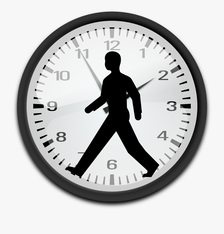 Which makes it all the more important that you don’t waste what time you are willing to expend on marketing by doing the wrong things. There is an old saying in quality management “Isn’t it amazing how people who don’t have time to get things right the first time they do them, always have time to do things a second time when the first time goes wrong.” And if you are spending money, you can’t afford to spend even more money correcting mistakes by getting things wrong first time. So, all that research is critical if you want to get things "right first time". You will make mistakes (because you are human), but you can minimise the number of mistakes you make.  The final resource I’m going to talk about is knowledge, which I have already touched on in previous blogs. If you don’t really know what you are doing, you are going to waste your other resources on getting things wrong. "Trial and error” may teach you a lot, but it is an expensive way to learn. Invest in yourself, even if the investment is just time spent doing a free on-line course. We’re not talking about studying for a 3 year marketing management degree here, just a few hours learning the basics of social media marketing and trying out a few ideas to get a feel for what is right for you and your books. Once you have your marketing plan – you can use it again and again, refining it each time as you learn what works best and what isn’t working so well. because you will have to keep 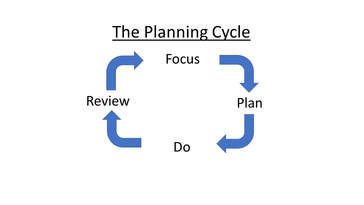 repeating your marketing activity, because marketing messages soon fade from people’s consciences and you will always be looking for new readers who will buy your books, because nobody buys the same book a second time. Consequently, you have to keep reviewing your plan to make sure it is delivering for you. There is a thing called the planning cycle which is made up of four stages:
Just because your marketing plan delivered some sales, it doesn't mean it couldn't have delivered more sales, so you need to look at your results to see where improvements can be made and then make those improvements. "But I'll finish with one word of caution"  That brings us to the end of this series of blogs on marketing. We hope you have found them helpful and, more importantly, we hope you are selling more books as a result of reading them. But if you still have questions, please feel free to ask them. You can find our email address on our “contacts” page. I’ll finish with one word of caution. You can’t make a silk purse out if a sow’s ear. A brilliant marketing plan won’t sell a book that readers don’t want to read. So, if you are doing all the things we have talked about in this series of blogs and your books still aren’t selling, then you have to ask yourself why. The answer is no longer going to be “because of a lack of marketing”. If you would like to express your thanks for the guidance we have offered over the past 13 weeks, it would be welcomed. We are publishers, so the best way of thanking us is to buy one of the books we publish. Take a look at our catalogue on our "Books" page. * We know that Twitter now accepts posts of up to 280 characters, but you need to make an allowance for the inclusion of a link to the book’s sales page and for hashtags. And, of course, character count isn’t an issue for Facebook posts, though people rarely read beyond the first few lines. For Facebook, think “elevator pitch” or “blurb”. If you have enjoyed this blog and want to make sure you don’t miss future editions, you can sign up for our newsletter. We’ll even send you a free ebook for doing so. Just click the button below. |
AuthorThis blog is compiled and curated by the Selfishgenie publishing team. Archives
June 2025
|
 RSS Feed
RSS Feed